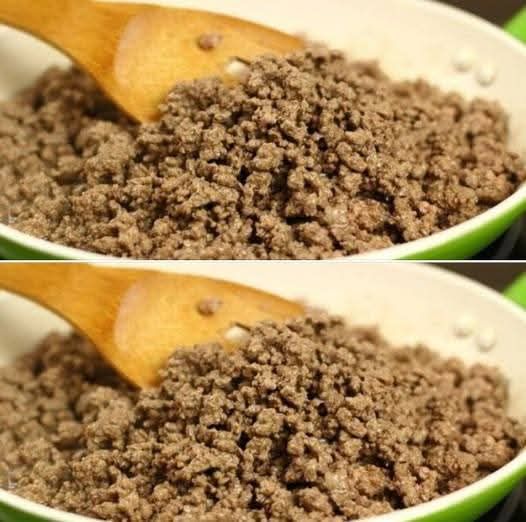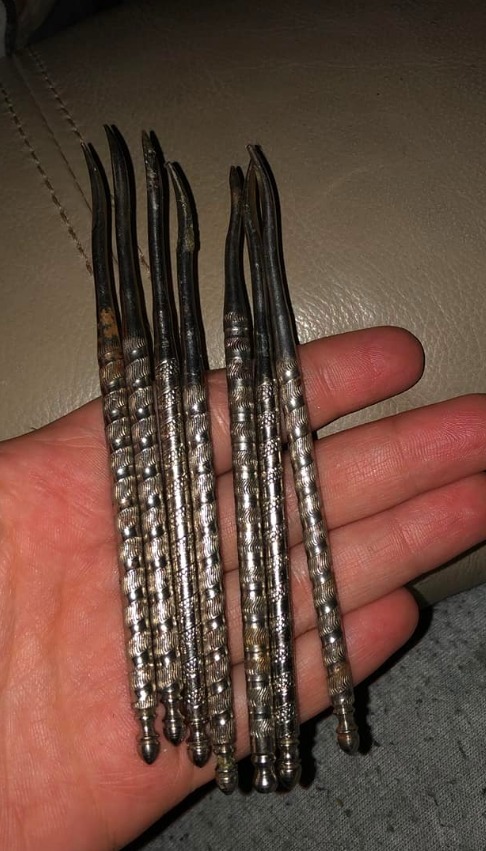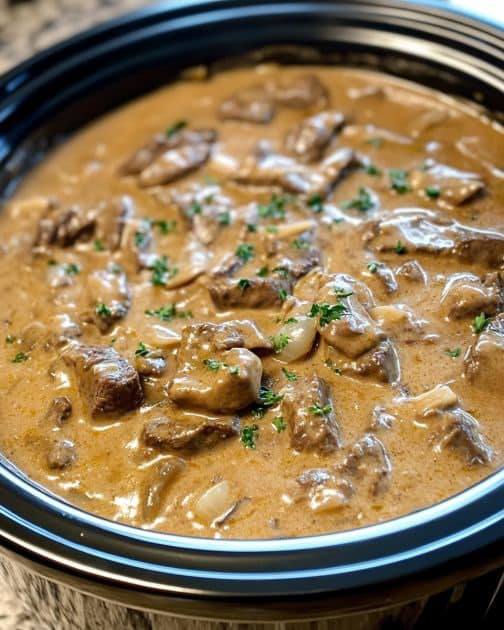When it comes to cooking up a storm in the kitchen, few ingredients are as beloved and versatile as ground beef. From classic tacos and chili to meatballs and burgers, ground beef is a culinary hero with countless roles. But nestled among the spices and sauces lies a surprisingly divisive kitchen debate: Should you rinse ground beef?
Some swear by rinsing — before or even after cooking — claiming it improves health and reduces grease. Others argue that rinsing is not only unnecessary but borderline sacrilegious, stripping flavor and making a mess. So what’s the truth? Let’s dig in.
Why Some Cooks Rinse Ground Beef
Before labeling rinsing as a cooking crime, let’s understand why people do it. There are some genuine, even practical, reasons behind this habit — especially for health-conscious home chefs.
1. To Reduce Fat Content
One of the most common reasons people rinse ground beef is to lower the fat content. If you’re using regular ground beef (typically 70% lean/30% fat or 80/20), you’re going to end up with some visible grease in the pan after browning.
Some studies have shown that draining and rinsing ground beef with hot water can reduce the fat content by as much as 50%, depending on how thoroughly it’s done. For people watching their cholesterol, cutting back on saturated fat, or counting calories, this might seem like a no-brainer.
2. To Eliminate Excess Grease
Grease can make your dish feel heavy and leave an unpleasant oily sheen. If you’re making something like tacos, where the beef is seasoned and added to a crisp shell, excess fat can make the taco soggy or overpower the spices.
A quick rinse under hot water helps remove residual grease, giving the meat a “cleaner” feel and allowing the dish’s other ingredients to shine. It’s a trick often used in budget-friendly or low-fat cooking.
How to Rinse Ground Beef Properly
If you are going to rinse ground beef, technique matters — both for food safety and practicality.
Step-by-Step: How to Rinse Ground Beef After Cooking
- Cook the Beef: Brown the ground beef in a skillet over medium-high heat until fully cooked, breaking it apart as it cooks.
- Drain the Fat: Carefully pour off as much grease as possible using a spoon or by tilting the pan (use a strainer over a bowl if needed).
- Rinse with Hot Water: Place the cooked beef into a fine-mesh colander and rinse under very hot water. This helps remove remaining fat.
- Let It Drain: Shake the colander gently and let the beef sit for a few minutes to remove excess water before adding it back to the pan or into your recipe.
Pro Tip: Always rinse over a container or garbage bowl — not directly into the sink — to prevent fat from going down the drain (more on that later).
But Wait — What’s the Downside of Rinsing?
While rinsing may have its perks, it’s not without drawbacks. In fact, many chefs — from home cooks to culinary professionals — firmly stand on Team No-Rinse. Here’s why:
1. Flavor Loss
Fat = flavor. This culinary principle is especially true with ground beef, where much of the richness and depth comes from the rendered fat. When you rinse ground beef, you don’t just remove fat — you wash away those delicious, savory juices that make your meat taste like, well, meat.
This is especially problematic for dishes that rely on those juices to carry spices or blend into sauces. In something like Bolognese or chili, rinsed beef can taste flat or underwhelming.
2. Texture Impact
Rinsing introduces water to the beef — and moisture can affect texture. Ground beef that’s been rinsed can take on a crumbly, less cohesive texture, which isn’t ideal if you’re making something like meatloaf, tacos, or stuffed peppers. The rinsing process cools the beef quickly, which may also interfere with how it interacts with other ingredients.
3. It’s Messy and Inconvenient
Let’s be honest: rinsing hot beef in a colander is not exactly a seamless process. You risk:
- Splattering hot water and grease everywhere
- Clogging your sink with meat bits and cooled fat
- Dirtying extra dishes or tools
- Losing valuable cooking time as you wait for meat to drain and dry
For busy home cooks, these hassles might not be worth the minor reduction in fat.
Why You Should Never Pour Fat Down the Drain
It may be tempting to dispose of grease quickly by pouring it down the sink — but don’t do it.
As the fat cools, it solidifies, forming thick layers in your pipes. Over time, this buildup can lead to:
- Clogged drains
- Slow water flow
- Foul smells
- Costly plumbing repairs
Instead, dispose of grease properly:
How to Safely Dispose of Fat
- Let It Cool: Allow the grease to cool in the pan.
- Scrape It Into a Container: Use a spatula to transfer it into a disposable container (like an empty can or jar).
- Seal and Trash It: Once solidified, seal the container and throw it in the trash.
You can also line a bowl with foil, pour in the grease, let it solidify, and then fold up the foil and toss it.
Leaner Alternatives to Rinsing
If your goal is to eat less fat without the mess of rinsing, there are simpler solutions:
1. Buy Leaner Beef
Ground beef comes in different fat-to-lean ratios. Look for these labels:
- 70/30: Regular ground beef (higher fat, juicier burgers)
- 80/20: Great for grilling and browning
- 85/15 or 90/10: Leaner options with less fat to begin with
- 93/7 or 95/5: Extra-lean for health-conscious dishes
2. Use a Paper Towel Drain Method
Instead of rinsing, try this cleaner approach:
- After cooking and draining your beef, place it on a plate lined with paper towels.
- Gently press another towel on top to absorb remaining grease.
This method can reduce surface fat without sacrificing flavor or risking a watery texture.
When Rinsing Might Make Sense
Despite its downsides, rinsing isn’t always wrong. In certain situations, it might be the best option:
- For medical diets requiring reduced fat intake
- When cooking for someone with digestive issues or fat sensitivity
- For recipes where beef is heavily seasoned after cooking (like taco filling or certain stir-fries)
- When preparing large batches and storing meat for use in multiple lean dishes
What Do Food Safety Experts Say?
The USDA does not recommend rinsing raw meat — including ground beef — before cooking, due to the risk of cross-contamination. Water can splash bacteria onto surrounding kitchen surfaces, creating a higher risk for foodborne illness.
Cooking ground beef to the proper internal temperature (160°F or 71°C) is the only recommended method to ensure safety.
Rinsing after cooking, while not unsafe in itself, still isn’t encouraged due to potential loss of nutrients and increased mess.
So, Should You Rinse Ground Beef?
Short Answer: Probably Not
Unless you’re on a strict low-fat diet or have a specific need to cut grease from your food, skipping the rinse is usually the better choice. Here’s why:
- You’ll preserve flavor and texture
- You’ll avoid mess and plumbing issues
- There are simpler alternatives like leaner beef or draining with paper towels
But — it’s your kitchen. If rinsing works for your dietary goals and you don’t mind the extra cleanup, go for it.
Final Verdict: Team Flavor vs. Team Fat-Free
Whether you’re Team Rinse or Team No-Rinse, there’s no universal right or wrong answer. Like many kitchen decisions, it comes down to your personal preferences, cooking goals, and health considerations.
The most important thing? Enjoy the process. Cook with confidence, experiment, and find the methods that work best for your lifestyle. And if your taco meat is a little greasy one day — well, that’s just extra flavor.





